Senor Tomato is a positive hero of culinary creations, unlike the character of the famous cartoon. To enjoy the taste of homemade vegetable, it is enough to know the features of the variety of culture and several rules of growing tomatoes.
Description Tomatov
Tomato, or Tomato - an annual or perennial plant of the family of Parenic. Up to the 18th century was not used in food, considering the fruit of tomato to poisonous.
Tomatoes are rich in fiber, glucose, fructose and other elements. Tomatoes improve the mood, due to the presence of Tiramine substances in them, which in the body turns into serotonin. The use of tomatoes in food increases immunity, improves digestion, lowers blood cholesterol.
Types and varieties of tomatoes: characteristics and classification
Depending on the height of the plant, the period of ripening of fruits is distinguished by three main varieties of tomatoes:
- determinant
- half-student
- intemimensional.
Determinant varieties
- Little. The height of the bush from 25 to 150 cm.
- Tomato bush forms from 3 to 5 brushes with inflorescences, growth is stopped by the last brush.
- The first brush is formed after 4-5 sheets. The rest grow through 1-2 sheets.
- Estimated - from 85 to 110 days from shoots to the first harvest. Sit into open ground.
- Sit down at a distance: 40-60 cm between bushes, 60-70 cm between beds. Depending on the varieties and dimensions of the bushes, a more dense landing is possible.
- Most popular varieties: Dubok, Yamal, Alaska, Sultan, Rocket, Agatha, etc.
Seventerminant varieties
- Tall. The height of the bush is from 150 to 160 cm.
- May limit growth after formation from 3 to 4 brushes.
- Association - from 85 to 110 days from shoots to the first harvest.
- Plant in film, winter greenhouses. In the open ground are grown in the southern regions.
- Popular varieties: Chirchik, partner Semko, Magnus, Chigan.
Intemimensional
- Grow in the form of liana while there is an opportunity.
- Vintage from 40 to 50 brushes. Form a plant in one stem.
- Late - ripening over 115 days from shoots to the first harvest.
- Grown in greenhouses.
- Located at a distance: 50-60 cm between bushes, 80-90 cm between rows. Such a large distance is determined by the need to support high bushes to the supports.
- Popular varieties: Nada, Noah, Star Gold, Christina Plum, Cherokee.
Due to the fact that industrialized varieties give a harvest only in the warmth climate and ripen later than determinants, disembarking in open ground to do it inexpedient.
Determinants are divided into:
- Stambling varieties. Possess low growth, strong stem. Do not need to form. The gate of plants is necessary.
- Determined. We need to form and step-down, i.e. Removing unnecessary shoots. Form in two stems.
- Superdermant. Little varieties. Do not require steps, because The harvest is tied on stepsing. Height not more than 0.8 m.
Tomato varieties for open soil
Early tomato varieties for open soil are all representatives of the determinant group. The advantage of this group of tomatoes in the full recovery of the crop and the convenience of care.
The most famous low-spirited tomatoes for open soil are:
- Mystery. Overseas grade. Ripening fruits on 85 days after seeding. The fruits are round, dense, weighing up to 150 g. The growth of plants comes to 40 cm. The bush needs to be pausing, otherwise tomatoes will be small.
- Anastasia. Ripening fruits for 100-105 days after sowing. The shape of the fruit is elongated, mass from 100 to 150 g. The bush can reach up to 130 cm in height.
- Alpha. Superwaterman grade. Maturation time from 85 to 95 days. The fruits of a rounded shape, red, weight up to 120 g. Apply in salads.
- Aphrodite F1.. Ultrahed variety. Fruit comes on 75 days after sowing. The height of the bush is up to 50 cm. Fruits of fleshy, elongated, weight up to 140 g.
- Valentina. Ripening up to 98 days after sowing. The height of the bush is up to 70 cm. This species is resistant to cracking.
Stambling varieties are the most unpretentious species of determinant low grades for open soil. Many varieties have proven themselves as cold-resistant.
Allocate the best grades of stammer tomatoes for growing in the open ground:
- Rose of Wind. Maturation time up to 3 months. Foldful. The height of the bush is not more than 50 cm. Fruits weighing up to 130 g.
- Polar variety. Ripening time from 94 to 108 days. Height up to 30 cm. The weight of the fetus until 150 g.
- Betta. Matures for 2.5 months. Busts up to 50 cm high. The weight of the fetus until 50 g
- Dubok. Ripening time from 100 to 110 days. The height of the bush is up to 60 cm. The weight of the fetus from 90 to 130 g.
- Yamal. Maturation time up to 83 days after shooting. The height of the bush from 25 to 30 cm. The weight of the fetus from 90 to 110 g.
Tomato growing stages in open ground
There are a number of non-hard rules that will help avoid the loss of yields and diseases of plants. Adhere to these rules is necessary at the stage of autumn soil preparation for landing.
Autumn soil preparation
Features of the preparation of good soil for growing tomato:
- The preparation of the soil to start in the fall, to frosts.
- Assessment of predecessors in the garden.
- Recommended cultures that could grow in the soil provided for landing tomato: cabbage, pumpkin and legumes, cucumbers, onions, parsley, carrots. During its growth, these plants contribute to the soil of substances that have favorably affecting the growth of tomato.
- Do not grow tomatoes where potatoes, eggplant, pepper grew to avoid infection with common diseases for these crops. Tomatoes are planted after cleaning potatoes in 2-3 years.
- Checking the acidity of the soil. A good soil for the tomato is the soil with a neutral acidity of 6.5-7.0 pH. Also tomatoes are ready to measure with the weakness of the soil. Do not tolerate acidic and alkaline soil.
- Increased acidity leads to the development of pathogenic bacteria and stopping the useful microorganisms made with fertilizers. To neutralize the soil acidity, it is worthwhile to be made to the ground from the calculation of 0.5-0.9 kg of lime per 1 m 2.
- The cultivation of tomatoes in the ground, in which tomatoes have already grew, leads to gradual oxidation of the soil, so it is possible to plant tomatoes after 3 years.
- In order to avoid the overaffect of calcium, which increases the alkalicity of the soil, make the lime better under previous cultures. To acidify alkaline soil, you can use fertilizers containing ammonia, except for calcium or potassium nitrate.
- The priority will be the soil, where fertilizers (compost, ash, lime) are previously introduced.
- After choosing a place for planting tomatoes, the soil is drunk to a depth of 22 to 25 cm. Soil does not smoke, for moisture accumulation.
- Organic fertilizers make, if the soil was not fertilized earlier. For fertilizer, you can use humid or compost. Close up of fertilizers to a depth of up to 25 cm. This will serve as the main reserve of nutrients for the root system of tomatoes.
- During fertilizer, it is impossible to mix ash with manure, ammonium sulfate, in order to avoid loss of nitrogen. Mixing ash with superphosphate and lime leads to a decrease in phosphorus availability.
Selection of tomato seeds for open soil
To select tomato varieties, important factors determine:
- Growing method: reckless or eaten. With a reckless way, it is possible to grow tomatoes only in the southern regions, due to the large duration of the growing season. Slowed into an open-out up to 20 ° C soil.
- Growing zone. When choosing seeds should pay attention to the fact that tomatoes should be designed for landing into an open ground. This is indicated on the packaging.
- tomatoes ripening time. Determine the amount of the harvest, which would like to receive. Despite the early maturity of the term, some ripening varieties of low yield of tomatoes.
- The purpose of growing crops. These may be preparations for the winter, conservation, use in salads fresh, long storage of fresh vegetables, etc. Seed producers often point to the appointment of tomato varieties.
- The amount of time to care for the tomatoes. Circle selection grade shrink if pasynkovanie, tying and Forming the bush will not have time.
- Prevention of Diseases. Knowledge of the basic parameters of soil, climate, common problems in the region will help to choose a stable form of tomato.
- The shape, color, size of the fruit. There are many beautiful and attractive varieties to see which wants to try to grow in their area.
Growing seedlings to plant tomatoes in the open ground
- If you plan to grow sprouts at home, determine the length of the growing period. To this figure is added to the period of sprouting of seeds and plants to adapt. Knowing the desired date of harvest, calculated the date of commencement of preparation of seeds.
- Preparation of seed. There are many tips on the preparation of seeds, and it is warm and processing of seeds in a solution of potassium permanganate, Alpin, zircon, etc. An important point in this case is a caution. It is believed that if the seed itself is not able to come up at home, the vitality of the plants in question.
- Preparation of containers for seedlings. It can be cups, tapes that need to be disinfected. Packaging for seedlings should be with drainage holes for air circulation, in order to avoid the formation of rot. The depth of the containers is selected at least 10cm.
- Substrate Preparation. The quality of seedlings of tomato substrate, not pretentious, you can just buy the peat soil, or to make their own hands.
- The substrate is carefully steamed and moisturize.
- Bury the seeds in the soil to 1 cm. After planting cover with foil container.
- Preparing the space for cassettes with seedlings. This should be a bright, warm place. The temperature in the room or greenhouse maintained at around 23 ° C, until the first rostochku.
- Only spray are watering. Soil moisture is checked by hand.
- After germination of seedlings film is removed. Do it in the afternoon, to avoid evaporation.
- Provide additional lighting. Lighting should not be located too close to the seedlings. A minimum distance of 50 cm.
- Casting seedlings. After removing the film, the temperature is adjusted: up to + 10 ° C at night, up to + 15 ° afternoon. Do it all the time before landing seedlings in open ground.
Choice of purchased seedlings Tomato for growing in the open ground
The main rules for choosing seedlings for growing in the open ground:
- The height of the plant should be no more than 20 cm.
- A good seedlings for growing low grades has from 6 to 8 leaves, for growing tall, from 11 to 12 leaves.
- Preference is given to Piced seedlings. Such seedlings are well developed root system. The roots are located along the periphery, and not the rod down.
- The open soil seedlings are planted hardened. Leaves of such seedlings are bright green.
- The age of seedlings for early varieties of tomato is no more than 60 days, for later - no more than 80 days.
- The thickness of the seedling stem is usually a little less than a pencil. Thicker stems indicate a "reconstruction" of plants with nitrogen fertilizers.
- The purchase of seedlings make as close as possible to the time of disembarkation, it is recommended two hours before landing in open ground, no more. Seedlings will take and may not begin.
Spring soil preparation
- In the spring, a week before the planned landing of seedlings prepare the soil.
- Smash all lumps of the earth and roll up the soil to exclude the evaporation of moisture, which has accumulated in winter and spring. During this time, the soil warms up, weeds will begin to appear, which can easily be removed by robbles.
- Fertilizers make. Mineral fertilizers contribute under the people. It can be 20 g of potassium chloride and 80 g superphosphate per 1 m 2.
- Nitrogen fertilizers are not introduced under the people, because They are needed by plants after adapting and starting growth.
- Before boarding, the wells make the well-required depth to 15 cm. The distances between the wells and rows depend on the varieties of tomatoes.
Rechazzle seedlings of tomatoes in open ground
- Planting seedlings are produced when the frosts are passed, and the plus temperature will persist during the week. For many areas, this is the first third of June, for some - the beginning of May.
- The area for planting a tomato to an open soil should be solar and ventilated. It can be southern, southwestern, southeast sites.
- Planting seedlings of tomatoes in the ground is made after the appearance of the first flower brush. At the seedlings at this time should be formed from 6 to 8 leaves. Usually the age of seedlings ranges from 50 to 60 days, depending on the type of tomatoes.
- In seedlings, which pulled out strongly by the time of planting, cut off a couple of lower leaves. After such trimming, the seedlings are planted with gluke in the soil, and the apparent roots on the lower part of the seedlings provide additional nutrition.
- Prepared wells are poured with water, at the rate of up to 1 liter per hole. Give water to soak into the soil.
- Seedlings with a developed root system put in the wells strictly vertically, plunged to seedy leaves.
- The stretched seedlings are tilted and plugged to half the stem.
- The wells with a seedy are watered and sprinkled with dry ground.
- Do not plan seedlings where plants grow, the neighborhood with which can harm tomatoes: potatoes, zucchini, fennel.
- For the growth of tomatoes, the neighborhood with basil, celery, onions, cherrykhu, favorably affect the growth of tomatoes.
Care of tomatoes
- Periodically remove the bottom leaves of tomatoes, which can lead to a stagnation of air at the bottom of the well. Remove no more than three leaves at a time. After the day, the plant should be pouring. The frequency of removal is at least once a week.
- Loose, soil are stolen, taped tomatoes at least three times a season.
- Give the soil on the 12th day after the seedlings landing.
- Successful temperature for the normal development of tomatoes: in sunny weather - up to 25 ° C, in a cloudy - from 18 to 22 ° C, at night - not lower than 15 ° C.
- Suitable air humidity 65%.
- During pollination, dry air is important.
Watering tomatoes in the open soil
- Excessive watering of tomatoes is harmful.
- Pour the tomatoes with water room temperature.
- Watering the tomato in the ground carefully, trying not to get on the leaves and the trunk of the plant. This causes burns.
- Pour tomatoes in the evening day, except for sun-hot days.
- Watering leads as farm kits bursting, growing to wet the entire depth of the layer with humus, fertilizer.
- Before dipping, during the flowering period of the first and second brushes, the plant is mandatory.
The formation of tomatoes
- Tomato packing is carried out during the vegetation.
- Intenerminant plants form in one stem, determinants - in two stems.
- Steying is removed at a length of 5 to 7 cm.
- To accelerate the growth and acceleration of ripening, the tomato remove the tops at the shoots that are fruit. Do it in mid-August.
- At the same time, all the brushes with empty beings are removed.
Making fertilizers
In order not to harm the plants and our own crop of tomatoes, follow by simple rules.
Organic fertilizers
- Organic nitrogen fertilizers are used in limited quantities. Excessive application of manure, compost, biohumus is fraught with the "living" of the tomato, while the stalks become thick, and the leaves are wide.
- If the organic fertilizers were made under the predecessors of tomatoes (cabbage, cucumber), then these fertilizers do not contribute to the early tomatoes.
- Under the late varieties of tomatoes make organic fertilizers only with autumn soil preparation.
Mineral fertilizers
- Mineral fertilizers have a positive effect on the growth of tomatoes and lead to continuous vegetation.
- If the mineral fertilizers were not made before disembarking, they were not made, they make the first feeding of nitrogen and phosphorus after 2-3 weeks after disembarking.
- The second feeding of ammonium Selitra is made at the beginning of the formation of the fetus.
| Mineral substance | Meaning in the growth of tomato | Signs of lack of substances |
| Nitrogen | Accelerated ripening of fruits when using this item together with potassium and magnesium | It may occur when tightening with transplant transplant seedlings into open ground. At the same time, only the bottom leaves are falling. The plant becomes light green, lagged behind |
| Potassium | An increase in resistance to temperature differences, diseases. Responsible for the formation of large fruits and high yield | Potassium lack is accompanied by staining the edges of the leaves in yellow-green and orange. In the future, the stalk is obsession |
| Magnesium | Increases the possibility of binding fruit. Affects their development and growth | Leaves fold up and yellow |
| Phosphorus | Improved root system. It has a positive effect on the taste of fruits, on their number and speed of ripening | Rain and cold prevent phosphorus suction. A sharp plant reacts to the lack of phosphorus during the growing season and after the transplantation. During this plant leaves darken, purple shade becomes, subsequently folded. Tomatoes at the same time bugs |
Overdose fertilizer
- Excess nitrogen leads to reduced plant immunity, the fetal ripening period increases.
- Excess chlorine is harmful. In order to avoid this, fertilizers should be made in the form of potassium sulfate. It is impossible to abandon potash fertilizers, tomatoes can get chlorose.
- In general, during an excess of nitrogen and phosphorus, the number of potassium may decrease, which entails a lack of magnesium and calcium in tomatoes.
Cleaning and storage of harvest
- With the beginning of September, the moment occurs when tomatoes with open soil are removed. During this period, a large number of fruits stop ripening.
- Due to uneven maturation, tomatoes are collected daily.
- Collecting the brown tomatoes allows the bustle to quit all the strength to ripen the green tomato. Browns will be able to walk at home in warmth and darkness.
- Fruits are collected without fruits.
- Store in a dark place at room temperature. In the refrigerator, the ripening process slows down.
Stock Foto Tomatoes in open soil
The main diseases of the tomato in the open soil
- Phytoofluorosis. One of the most common diseases of tomatoes. The pathogen is the Mushroom "Phyotoftor". For the development of phytoophulas in tomatoes in open ground, the most favorable conditions. It develops with high humidity of 75%, moderately warm weather from 15 to 20 ° C, oscillations of night and daytime temperatures and with abundant dears. All this is observed by the middle of summer. Amazed mostly fruit, rot. The pathogen settles on the soil, on potatoes, on the remains of plants. For prevention, the use of biological and chemical drugs is possible.
- Alternariasis. Leaves and fruits are covered with black spots, then completely black. Develops at high temperatures and humidity. Weather change accelerate the process of developing the disease. In the open soil use and metaxil.
- Septoriosia (White spot). The lower, the old leaves are illicious first, covered with dark stains, twisted and disappear. It develops at a temperature of +15 to + 17 ° C, air humidity is 76% and higher. Mushroom persists in plants residues. There are no chemical approved measures. Many varieties of tomatoes have a gene resistance gene to sepitoria.
Growing a tomato in an open ground is a painstaking case, but not difficult. The main thing to comply with simple rules and know the patterns of nature. And then she gives you a generous harvest of this tasty fetus.

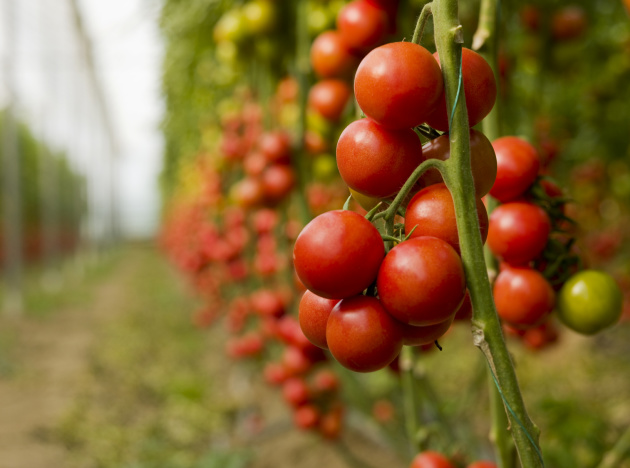
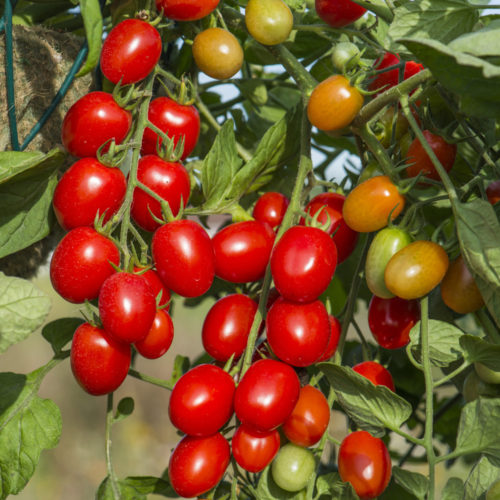
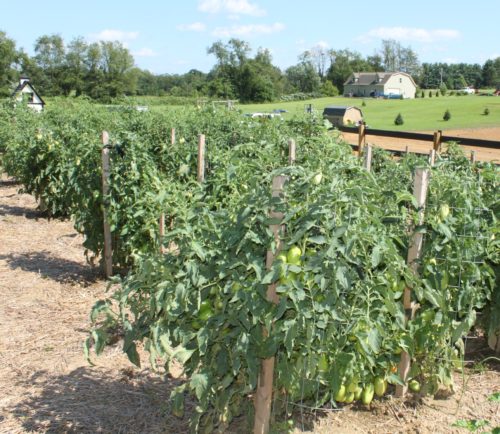
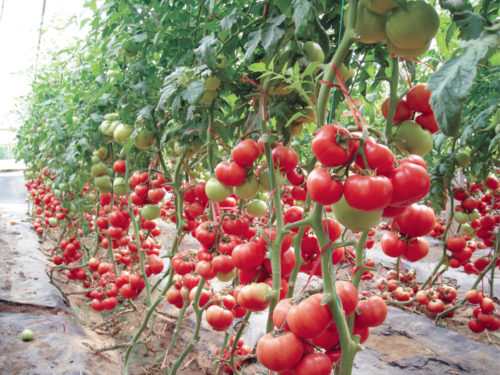
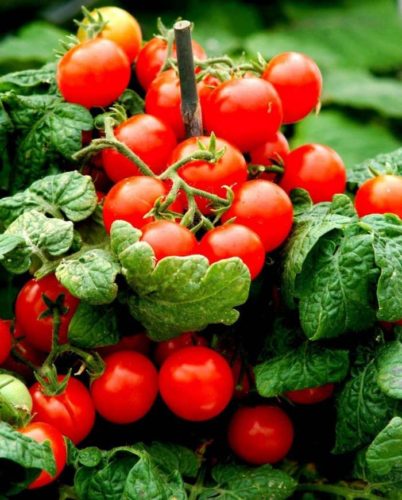
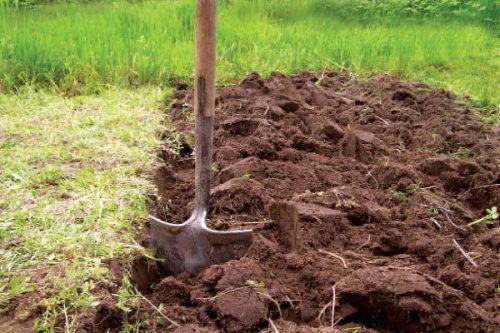
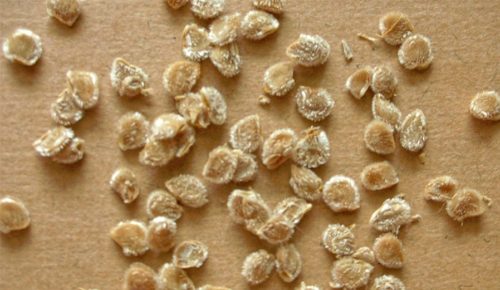
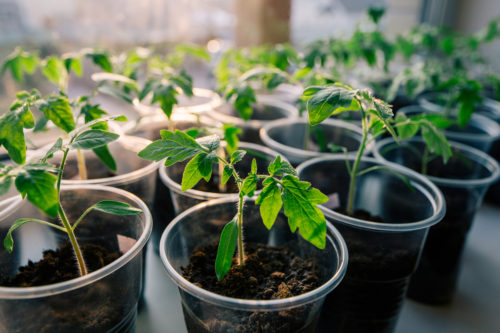
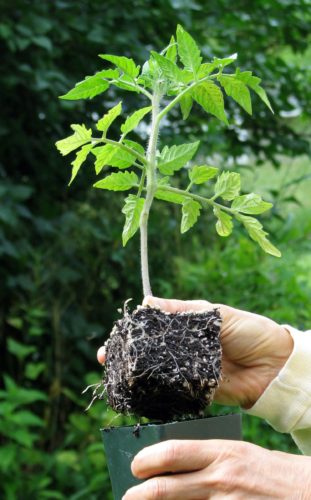
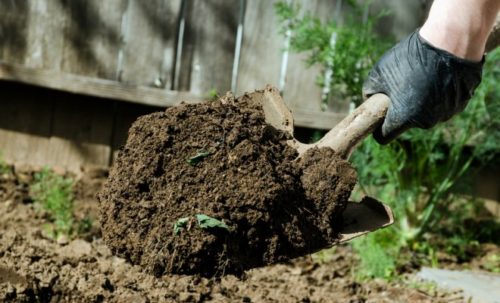
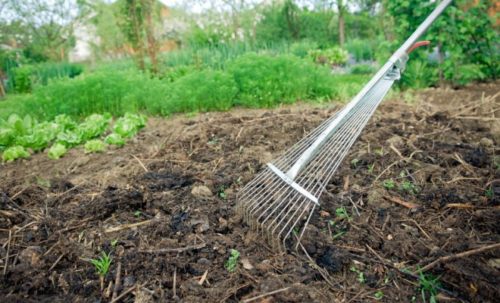
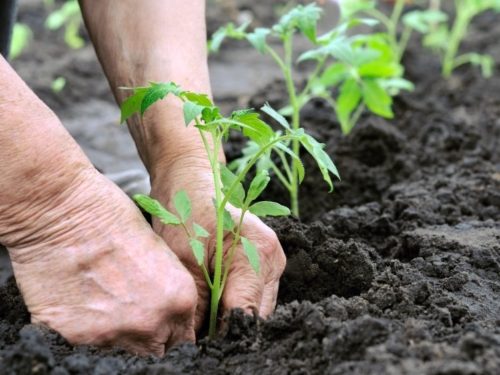
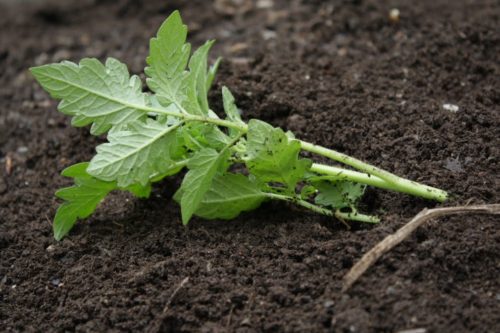
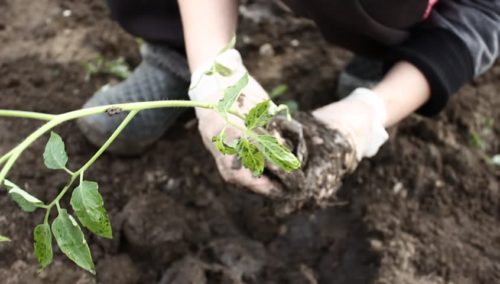
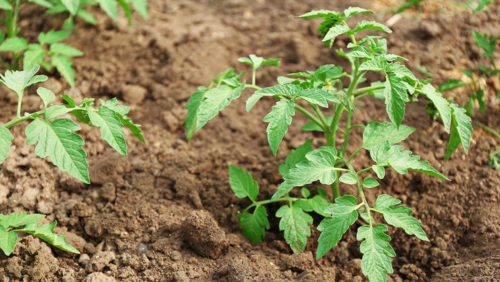

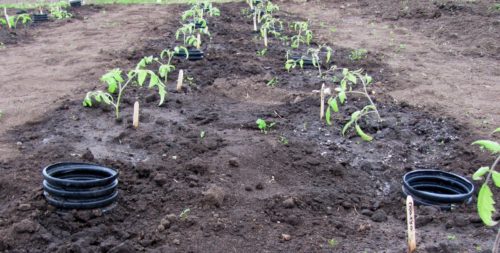
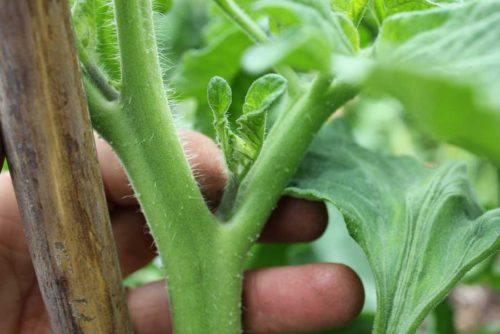
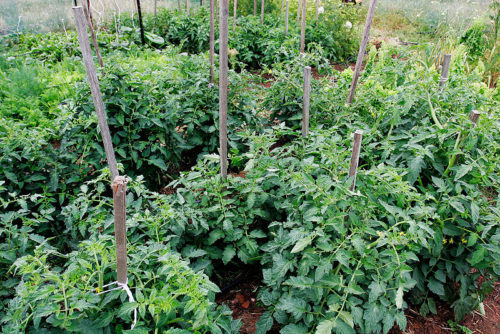
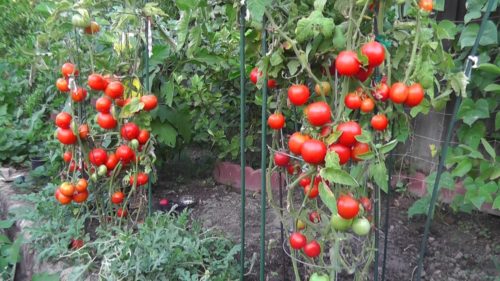
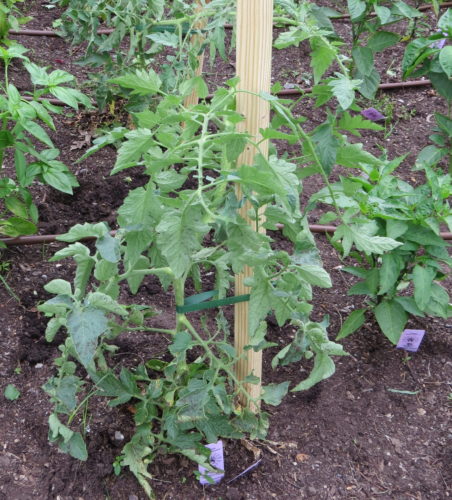
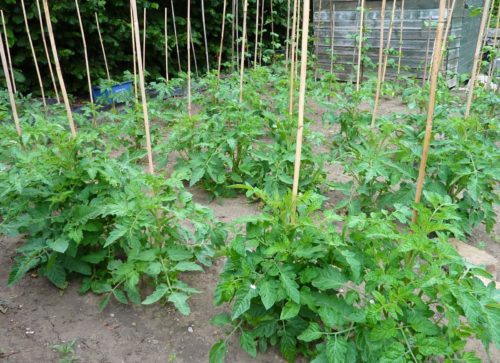













 Start a discussion ...
Start a discussion ...